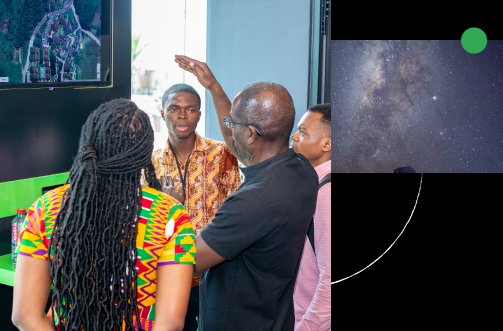
Noureldin
Research Areas
Authored Publications
Sort By
Visualizing dynamics of charges and strings in (2 + 1)D lattice gauge theories
Tyler Cochran
Bernhard Jobst
Yuri Lensky
Gaurav Gyawali
Norhan Eassa
Melissa Will
Aaron Szasz
Dmitry Abanin
Rajeev Acharya
Laleh Beni
Trond Andersen
Markus Ansmann
Frank Arute
Kunal Arya
Abe Asfaw
Juan Atalaya
Brian Ballard
Alexandre Bourassa
Michael Broughton
David Browne
Brett Buchea
Bob Buckley
Tim Burger
Nicholas Bushnell
Anthony Cabrera
Juan Campero
Hung-Shen Chang
Jimmy Chen
Benjamin Chiaro
Jahan Claes
Agnetta Cleland
Josh Cogan
Roberto Collins
Paul Conner
William Courtney
Alex Crook
Ben Curtin
Sayan Das
Laura De Lorenzo
Paul Donohoe
ILYA Drozdov
Andrew Dunsworth
Alec Eickbusch
Aviv Elbag
Mahmoud Elzouka
Vinicius Ferreira
Ebrahim Forati
Austin Fowler
Brooks Foxen
Suhas Ganjam
Robert Gasca
Élie Genois
William Giang
Dar Gilboa
Raja Gosula
Alejo Grajales Dau
Dietrich Graumann
Alex Greene
Steve Habegger
Monica Hansen
Sean Harrington
Paula Heu
Oscar Higgott
Jeremy Hilton
Robert Huang
Ashley Huff
Bill Huggins
Cody Jones
Chaitali Joshi
Pavol Juhas
Hui Kang
Amir Karamlou
Kostyantyn Kechedzhi
Trupti Khaire
Bryce Kobrin
Alexander Korotkov
Fedor Kostritsa
John Mark Kreikebaum
Vlad Kurilovich
Dave Landhuis
Tiano Lange-Dei
Brandon Langley
Kim Ming Lau
Justin Ledford
Kenny Lee
Loick Le Guevel
Wing Li
Alexander Lill
Will Livingston
Aditya Locharla
Daniel Lundahl
Aaron Lunt
Sid Madhuk
Ashley Maloney
Salvatore Mandra
Leigh Martin
Orion Martin
Cameron Maxfield
Seneca Meeks
Anthony Megrant
Reza Molavi
Sebastian Molina
Shirin Montazeri
Ramis Movassagh
Charles Neill
Michael Newman
Murray Ich Nguyen
Chia Ni
Kris Ottosson
Alex Pizzuto
Rebecca Potter
Orion Pritchard
Ganesh Ramachandran
Matt Reagor
David Rhodes
Gabrielle Roberts
Kannan Sankaragomathi
Henry Schurkus
Mike Shearn
Aaron Shorter
Vladimir Shvarts
Vlad Sivak
Spencer Small
Clarke Smith
Sofia Springer
George Sterling
Jordan Suchard
Alex Sztein
Doug Thor
Mert Torunbalci
Abeer Vaishnav
Justin Vargas
Sergey Vdovichev
Guifre Vidal
Steven Waltman
Shannon Wang
Brayden Ware
Kristi Wong
Cheng Xing
Jamie Yao
Ping Yeh
Bicheng Ying
Juhwan Yoo
Grayson Young
Yaxing Zhang
Ningfeng Zhu
Yu Chen
Vadim Smelyanskiy
Adam Gammon-Smith
Frank Pollmann
Michael Knap
Nature, 642 (2025), 315–320
Preview abstract
Lattice gauge theories (LGTs) can be used to understand a wide range of phenomena, from elementary particle scattering in high-energy physics to effective descriptions of many-body interactions in materials. Studying dynamical properties of emergent phases can be challenging, as it requires solving many-body problems that are generally beyond perturbative limits. Here we investigate the dynamics of local excitations in a LGT using a two-dimensional lattice of superconducting qubits. We first construct a simple variational circuit that prepares low-energy states that have a large overlap with the ground state; then we create charge excitations with local gates and simulate their quantum dynamics by means of a discretized time evolution. As the electric field coupling constant is increased, our measurements show signatures of transitioning from deconfined to confined dynamics. For confined excitations, the electric field induces a tension in the string connecting them. Our method allows us to experimentally image string dynamics in a (2+1)D LGT, from which we uncover two distinct regimes inside the confining phase: for weak confinement, the string fluctuates strongly in the transverse direction, whereas for strong confinement, transverse fluctuations are effectively frozen. We also demonstrate a resonance condition at which dynamical string breaking is facilitated. Our LGT implementation on a quantum processor presents a new set of techniques for investigating emergent excitations and string dynamics.
View details
Visualizing Dynamics of Charges and Strings in (2+1)D Lattice Gauge Theories
Tyler Cochran
Bernhard Jobst
Yuri Lensky
Gaurav Gyawali
Norhan Eassa
Melissa Will
Aaron Szasz
Dmitry Abanin
Rajeev Acharya
Laleh Beni
Trond Andersen
Markus Ansmann
Frank Arute
Kunal Arya
Abe Asfaw
Juan Atalaya
Brian Ballard
Alexandre Bourassa
Michael Broughton
David Browne
Brett Buchea
Bob Buckley
Tim Burger
Nicholas Bushnell
Anthony Cabrera
Juan Campero
Hung-Shen Chang
Jimmy Chen
Benjamin Chiaro
Jahan Claes
Agnetta Cleland
Josh Cogan
Roberto Collins
Paul Conner
William Courtney
Alex Crook
Ben Curtin
Sayan Das
Laura De Lorenzo
Paul Donohoe
ILYA Drozdov
Andrew Dunsworth
Alec Eickbusch
Aviv Elbag
Mahmoud Elzouka
Vinicius Ferreira
Ebrahim Forati
Austin Fowler
Brooks Foxen
Suhas Ganjam
Robert Gasca
Élie Genois
William Giang
Dar Gilboa
Raja Gosula
Alejo Grajales Dau
Dietrich Graumann
Alex Greene
Steve Habegger
Monica Hansen
Sean Harrington
Paula Heu
Oscar Higgott
Jeremy Hilton
Robert Huang
Ashley Huff
Bill Huggins
Cody Jones
Chaitali Joshi
Pavol Juhas
Hui Kang
Amir Karamlou
Kostyantyn Kechedzhi
Trupti Khaire
Bryce Kobrin
Alexander Korotkov
Fedor Kostritsa
John Mark Kreikebaum
Vlad Kurilovich
Dave Landhuis
Tiano Lange-Dei
Brandon Langley
Kim Ming Lau
Justin Ledford
Kenny Lee
Loick Le Guevel
Wing Li
Alexander Lill
Will Livingston
Aditya Locharla
Daniel Lundahl
Aaron Lunt
Sid Madhuk
Ashley Maloney
Salvatore Mandra
Leigh Martin
Orion Martin
Cameron Maxfield
Seneca Meeks
Anthony Megrant
Reza Molavi
Sebastian Molina
Shirin Montazeri
Ramis Movassagh
Charles Neill
Michael Newman
Murray Ich Nguyen
Chia Ni
Kris Ottosson
Alex Pizzuto
Rebecca Potter
Orion Pritchard
Ganesh Ramachandran
Matt Reagor
David Rhodes
Gabrielle Roberts
Kannan Sankaragomathi
Henry Schurkus
Mike Shearn
Aaron Shorter
Vladimir Shvarts
Vlad Sivak
Spencer Small
Clarke Smith
Sofia Springer
George Sterling
Jordan Suchard
Alex Sztein
Doug Thor
Mert Torunbalci
Abeer Vaishnav
Justin Vargas
Sergey Vdovichev
Guifre Vidal
Steven Waltman
Shannon Wang
Brayden Ware
Kristi Wong
Cheng Xing
Jamie Yao
Ping Yeh
Bicheng Ying
Juhwan Yoo
Grayson Young
Yaxing Zhang
Ningfeng Zhu
Yu Chen
Vadim Smelyanskiy
Adam Gammon-Smith
Frank Pollmann
Michael Knap
Nature, 642 (2025), 315–320
Preview abstract
Lattice gauge theories (LGTs) can be used to understand a wide range of phenomena, from elementary particle scattering in high-energy physics to effective descriptions of many-body interactions in materials. Studying dynamical properties of emergent phases can be challenging, as it requires solving many-body problems that are generally beyond perturbative limits. Here we investigate the dynamics of local excitations in a LGT using a two-dimensional lattice of superconducting qubits. We first construct a simple variational circuit that prepares low-energy states that have a large overlap with the ground state; then we create charge excitations with local gates and simulate their quantum dynamics by means of a discretized time evolution. As the electric field coupling constant is increased, our measurements show signatures of transitioning from deconfined to confined dynamics. For confined excitations, the electric field induces a tension in the string connecting them. Our method allows us to experimentally image string dynamics in a (2+1)D LGT, from which we uncover two distinct regimes inside the confining phase: for weak confinement, the string fluctuates strongly in the transverse direction, whereas for strong confinement, transverse fluctuations are effectively frozen. We also demonstrate a resonance condition at which dynamical string breaking is facilitated. Our LGT implementation on a quantum processor presents a new set of techniques for investigating emergent excitations and string dynamics.
View details
Verifiable Quantum Advantage via Optimized DQI Circuits
Dmitri Maslov
Stephen Jordan
arXiv:2510.10967 (2025)
Preview abstract
Decoded Quantum Interferometry (DQI) provides a framework for superpolynomial quantum speedups by reducing certain optimization problems to reversible decoding tasks. We apply DQI to the Optimal Polynomial Intersection (OPI) problem, whose dual code is Reed-Solomon (RS). We establish that DQI for OPI is the first known candidate for verifiable quantum advantage with optimal asymptotic speedup: solving instances with classical hardness $O(2^N)$ requires only $\widetilde{O}(N)$ quantum gates, matching the theoretical lower bound. Realizing this speedup requires highly efficient reversible RS decoders. We introduce novel quantum circuits for the Extended Euclidean Algorithm, the decoder's bottleneck. Our techniques, including a new representation for implicit Bézout coefficient access, and optimized in-place architectures, reduce the leading-order space complexity to the theoretical minimum of $2nb$ qubits while significantly lowering gate counts. These improvements are broadly applicable, including to Shor's algorithm for the discrete logarithm. We analyze OPI over binary extension fields $GF(2^b)$, assess hardness against new classical attacks, and identify resilient instances. Our resource estimates show that classically intractable OPI instances (requiring $>10^{23}$ classical trials) can be solved with approximately 5.72 million Toffoli gates. This is substantially less than the count required for breaking RSA-2048, positioning DQI as a compelling candidate for practical, verifiable quantum advantage.
View details
Expressing and Analyzing Quantum Algorithms with Qualtran
Charles Yuan
Anurudh Peduri
arXiv::2409.04643 (2024)
Preview abstract
Quantum computing's transition from theory to reality has spurred the need for novel software tools to manage the increasing complexity, sophistication, toil, and chance for error of quantum algorithm development. We present Qualtran, an open-source library for representing and analyzing quantum algorithms. Using carefully chosen abstractions and data structures, we can simulate and test algorithms, automatically generate information-rich diagrams, and tabulate resource requirements. Qualtran offers a \emph{standard library} of algorithmic building blocks that are essential for modern cost-minimizing compilations. Its capabilities are showcased through the re-analysis of key algorithms in Hamiltonian simulation, chemistry, and cryptography. The resulting architecture-independent resource counts can be forwarded to our implementation of cost models to estimate physical costs like wall-clock time and number of physical qubits assuming a surface-code architecture. Qualtran provides a foundation for explicit constructions and reproducible analysis, fostering greater collaboration within the quantum algorithm development community. We believe tools like Qualtran will accelerate progress in the field.
View details
Algorithms for the Communication of Samples
Lucas Theis
Proceedings of the 39th International Conference on Machine Learning (2022) (to appear)
Preview abstract
The efficient communication of noisy data has applications in several areas of machine learning, such as neural compression or differential privacy, and is also known as reverse channel coding or the channel simulation problem. Here we propose two new coding schemes with practical advantages over existing approaches. First, we introduce ordered random coding (ORC) which uses a simple trick to reduce the coding cost of previous approaches. This scheme further illuminates a connection between schemes based on importance sampling and the so-called Poisson functional representation. Second, we describe a hybrid coding scheme which uses dithered quantization to more efficiently communicate samples from distributions with bounded support.
View details
